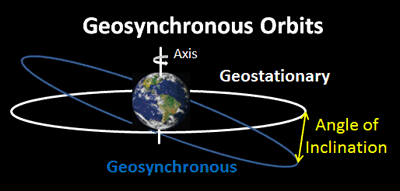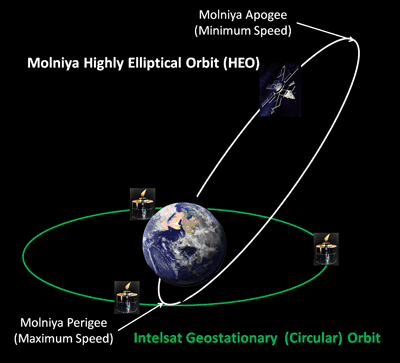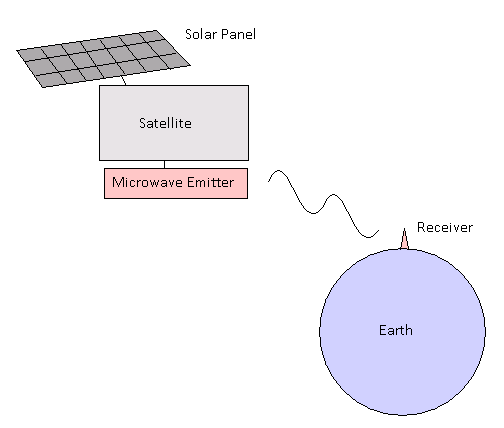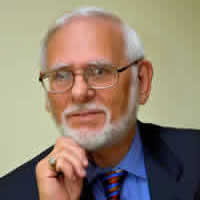Since clouds, atmosphere and nighttime are absent in space, satellite-based solar panels would be able to capture and transmit substantially more energy than terrestrial solar panels.
Len Calderone for | Altenergymag
Solar panels for consumers have been around for over forty years, yet we have not been able to take advantage of the sun’s direct rays in space. Although the world’s governments keep pushing for a carbon-emission-free energy source, the bureaucrats don’t want to pony up the money. We sent men to the moon, operate satellites in space, place men and women in a space station, but the world leaders seem to care more about the money than sustaining the environment.
Although the cost of building, launching, maintaining and harnessing SBSP (Space Based Solar Power) has been prohibitive, the nations of the world must all chip in. Yes, it will cost hundreds of millions of dollars to get such a program up and running, but we are spending such sums to build nuclear plants and to implement fracking programs. It really comes down to priorities or lack of them.
The Japanese Aerospace Exploration Agency is currently working on several models for solar-collecting satellites, which would fly in a geosynchronous (GEO) orbit 23,000 miles above the receiving stations. The system has a deficiency in that the photovoltaic-topped panel would lose power as the Earth turned away from the Sun, but they have an advanced model that has two mirrors that reflect sunlight onto two photovoltaic panels. While the advanced model would be more difficult to build, it has the advantage of generating electricity 24-hours a day.

A Geosynchronous Orbit is the same period as Earth's rotation—synchronous with Earth's rotation, but the plane of the orbit can have any inclination between 0 and 90 degrees with respect to the equatorial plane and the orbit may be elliptical rather than circular.
From Earth, the orbiting satellite appears to move North and South in the sky in an elongated figure eight centered on a fixed longitude. It will follow the same trajectory every day, and will pass any specific point in space at precisely the same time every day.
Engineer, Ian Cash, who has decades of experience providing electronics design services to the automotive, aerospace, defense and power industries, thinks he may have come up with a viable solution, namely HESPeruS (Highly Elliptical Solar Power Satellite).

HESPeruS uses a highly elliptical 12-hour orbit, which travels out to 24,850 miles over the northern hemisphere and 310 miles in the southern hemisphere. It takes less propellant to reach this orbit than GEO and historically costs half as much.
This means that the satellite makes two orbits per day where it moves North and South hurtling rapidly through its perigee over the oceans of the southern hemisphere, but slowly hovering around its apogee over the northern hemisphere for its highly elliptical orbit.
On the first 12 hour orbit the satellite hovers for about eight hours over Canada and the USA and during the following orbit it hovers for eight hours over Russia. See the Molniya Ground Track diagram below.
.jpg)
No research is required to develop the energy source for SBSP satellites. It already exists in the sun, which is a full scale, constant, long-life fusion reactor, located at a safe distance. All that engineers need to do is design and build a conversion system that can operate in the environment of space. The basic technologies are all recognized and demonstrated.
Even if SBSP satellites are considered safe, orbiting one might be a problem if the multi-billion-dollar satellite cannot be guaranteed a space orbit. According to international treaties no one can control outer space. Therefore, what countries—if any— can place their satellites into this orbit and under what legal right.
Assuming that such a satellite can be placed in orbit, how would solar panels work in space? Presently, 55 to 60% of the solar energy is lost on its way through the atmosphere by the effects of atmosphere reflection and absorption. Space-based solar power systems convert sunlight to microwave or laser beams outside the atmosphere, avoiding these losses.
The energy from a solar satellite could be significant, theoretically delivering up to 1,000-2,000 MW of power to the Earth. So, a single solar satellite would deliver the energy for roughly 240,000 - 480,000 homes.
Solar panel equipped, energy transmitting satellites collect high intensity, uninterrupted solar radiation by using giant mirrors to reflect huge amounts of solar rays onto smaller solar collectors. This radiation is then wirelessly beamed to Earth in a safe and controlled way as either a microwave or laser beam.
.jpg)
At this point in time, lasers may be impractical for this purpose, because clouds block the transmission. Microwaves are better at converting power into electricity, and the generation of laser power tends to be inefficient. The laser beam option would involve sending small laser-transmitting satellites into space at the relatively low cost of between $500 million to $1 billion. The small diameter of the laser beam would make it easier to collect on the ground. But at just 1 MW to 10 MW per satellite, many satellites would be needed to provide enough energy.
.jpg)
Newer laser technology relies on plates made from a special ceramic material containing chromium, which absorbs the sunlight, and neodymium, which efficiently converts sunlight to laser light. The newly developed lasers demonstrated an impressive 42% solar-to-laser energy conversion efficiency, outperforming previous technology by a factor of four. Time will tell if the new laser technology will work as advertised.
The microwave alternative would have the benefit of uninterrupted transmission through rain, hail or other atmospheric conditions and could provide gigawatts of power. At microwave frequencies, the conversion of the oscillating electric field into direct current will be at about an 85% efficiency. The production of microwave energy in space, the reception of the energy on Earth, and then the transfer to electrical current all cut into the energy produced, so that the final output may be expected to have somewhere around a 50% efficiency.

The recommended transmission strength is 230 W/m² (watt per square meter) in the center of the microwave beam. This is about a quarter the strength of full sunlight, and will be a safe concentration through which aircraft and birds can fly.
Every hour, more solar energy reaches the Earth than humans use in a year. About 30% of this energy is reflected back into space by the atmosphere. Since clouds, atmosphere and nighttime are absent in space, satellite-based solar panels would be able to capture and transmit substantially more energy than terrestrial solar panels. It could take decades before we see a practical application of the technology—maybe in the 2040s or later.
For additional information:
- http://www.rish.kyoto-u.ac.jp/SPS/WPReportStd.pdf
- http://www.sspi.gatech.edu/wptshinohara.pdf
- http://www.esa.int/gsp/ACT/doc/POW/ACT-RPT-NRG-2209-SPS_concluded_and_ongoing_activities_reduced_size.pdf
- https://www.nasa.gov/pdf/716070main_Mankins_2011_PhI_SPS_Alpha.pdf
- http://www.ripublication.com/aeee_spl/aeeev4n2spl_12.pdf
Len Calderone - Contributing EditorLen contributes to this publication on a regular basis. Past articles can be found in the Article Library and his profile on our Associates Page He also writes short stores that always have a surprise ending. These can be found at http://www.smashwords.com/profile/view/Megalen. |
 |
The content & opinions in this article are the author’s and do not necessarily represent the views of AltEnergyMag
Comments (0)
This post does not have any comments. Be the first to leave a comment below.

